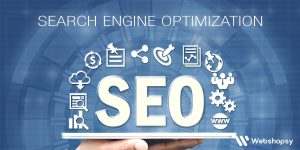SEO 終極指南:如何提升排名並吸引更多顧客

Did you know that the world’s first website, created by Tim Berners-Lee, is still accessible today? Launched on August 6, 1991, this groundbreaking site provided information about the World Wide Web project. Fast forward a few years, and SEO (Search Engine Optimization) emerged as a crucial strategy for websites to gain visibility online, coinciding with the launch of Ask Jeeves and the quiet registration of a now-dominant player—Google.
In today’s digital age, SEO is the backbone of online success. Whether you run a small business or a global enterprise, optimizing your website can significantly impact your visibility, traffic, and ultimately, revenue. In this guide, we’ll walk you through essential SEO strategies to help your website rank higher and attract more customers.
Table of Contents
What is SEO and Why Does It Matter?
How Google Ranks Websites
Crawling
Indexing
Ranking
Top 10 SEO Tips for Success
First 5 SEO Tips
Next 5 SEO Tips
Free SEO Tools to Enhance Your Website
Benefits of SEO for Your Business
How to Get Started with SEO Today
What is SEO and Why Does It Matter?
SEO (Search Engine Optimization) is the process of improving your website to increase its visibility in search engine results. When potential customers search for products or services related to your business, a well-optimized website increases your chances of appearing at the top of search results, driving more organic traffic and conversions.
Google isn’t the only search engine—other notable ones include Microsoft Bing, Russia’s Yandex, China’s Baidu, and Ecosia, which plants trees with every search. However, since Google dominates with approximately 91.9% of search engine traffic, optimizing for Google remains the primary focus for most businesses.
How Google Ranks Websites
Google employs a complex algorithm with over 210 ranking factors to determine search results. Understanding how Google ranks pages is essential for effective SEO. Here’s a breakdown:
1. Crawling
Search engines use bots (crawlers) to scan web pages and understand their content. These crawlers navigate the internet by following links, just like a customer browsing a store. Since bots can’t interpret images like humans, using alt text for visuals helps them understand your content better.
2. Indexing
After crawling, Google stores the collected information in a vast database known as an index. Think of it as a massive digital library containing every page Google has ever scanned. Proper indexing ensures that your content appears in search results when relevant queries are made.
3. Ranking
Once a user enters a search query, Google retrieves and ranks pages based on relevance and authority. Some of the key ranking factors include:
High-Quality Content – Informative, well-written, and engaging content performs best.
Backlinks – Links from other reputable websites boost credibility.
Search Intent – Matching content with what users are looking for.
Website Speed – Fast-loading sites rank higher.
Mobile-Friendliness – Google prioritizes mobile-optimized pages.
Domain Authority – Established sites with a strong reputation rank better.
Keyword Optimization – Proper use of relevant search terms.
Website Structure – Well-organized navigation helps both users and search engines.
Top 10 SEO Tips for Success
SEO is a long-term strategy that requires consistent effort. Here are 10 essential tips to improve your ranking:
First 5 SEO Tips
Publish Valuable, Authoritative Content – Your website should provide useful and insightful information that engages your audience.
Update Content Regularly – Keeping your site fresh signals to Google that your content remains relevant.
Optimize Metadata – Ensure unique and keyword-rich title tags, meta descriptions, and headers for each page.
Build a Strong Link Profile – Earning backlinks from reputable sites enhances credibility.
Use Alt Text for Images – Descriptive text helps Google understand visual elements, improving accessibility.
Next 5 SEO Tips
Start a Blog – Regular blog posts help integrate relevant keywords and demonstrate expertise.
Research Keywords Effectively – Utilize SEO tools to discover high-traffic search terms related to your business.
Gain Backlinks from Trusted Sources – Establish partnerships with industry-related websites.
Monitor Competitor SEO Strategies – Analyzing competitors helps refine your approach.
Be Patient – SEO results take time, but persistence leads to long-term success.
Free SEO Tools to Enhance Your Website
There are many powerful SEO tools available to help improve your website’s performance. Some of the best free ones include:
Google Keyword Planner – Helps find high-ranking keywords.
Google Search Console – Tracks performance and identifies indexing issues.
Google Trends – Shows keyword popularity trends over time.
Google Analytics – Provides insights into website traffic and user behavior.
Screaming Frog SEO Spider – Identifies broken links and duplicate content.
Benefits of SEO for Your Business
Investing in SEO offers significant advantages, including:
Increased Website Traffic – More visitors mean more potential customers.
Higher Lead Generation – Optimized pages attract better-quality leads.
Stronger Brand Authority – Ranking on Google builds trust and credibility.
Cost-Effective Marketing – Unlike paid ads, SEO generates long-term organic traffic.
24/7 Online Visibility – A well-optimized site works for you around the clock.
How to Get Started with SEO Today
By implementing these SEO strategies, you can dramatically improve your online presence and attract more customers. At Webshopsy, we specialize in helping businesses achieve top search rankings through expert web design and SEO optimization.
Ready to Boost Your Website’s Performance?
If you’re looking to enhance your online presence, drive more traffic, and increase sales, our professional and affordable web design services are here to help. Contact us today to get started on your journey to SEO success!
📞 Get in Touch with Webshopsy – Let’s create a website that ranks and converts!






